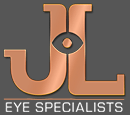Preparing for Cataract Surgery: A Step-by-Step Guide

Not everyone knows this, but the first successful cataract surgery was performed in the year 600 BCE by a surgeon from India named Sushruta. He developed an ancient technique called “couching,” which entailed using a sharp instrument to dislodge the cloudy lens. However, this method did not remove the cataract but merely shifted it to where it does not obstruct vision.
According to the World Health Organization (WHO), cataracts impact around 65.2 million people globally, leading to moderate to severe vision loss in over 80% of these cases. While most individuals do not exhibit symptoms until they are at least 40 years old, cataracts can affect anyone at any age—including newborns.
Congenital cataracts, also called infantile cataracts, can be caused by genetic mutations, intrauterine infections, or metabolic problems. They present within the first year of life and vary in severity. Some may require prompt surgical removal while others might not significantly affect vision.
Cataract surgery has been clinically proven to result in significant vision improvement, often eliminating the need for spectacles or eyeglasses. However, the success of this procedure depends on careful preparation by both the surgeon and patient. In this blog, we will cover everything you need to know to help achieve the best possible results in your cataract surgery.
Book a consultation with Dr Jimmy Lim today.
Cataract Causes & Symptoms
Cataracts are a common eye condition where the lens of the eye becomes cloudy, leading to a decrease in vision. As mentioned, they are most commonly caused by ageing, but other factors like diabetes, smoking, prolonged exposure to UV light, and certain medications can also contribute to their development.
Symptoms of cataracts include blurred vision, difficulty seeing in low light, colours appearing faded, increased sensitivity to glare, and seeing halos around lights. While cataracts cannot be completely prevented, you can do something to lower your risk. Firstly, shield your eyes from harmful UV rays by wearing sunglasses or wide-brimmed hats. Secondly, maintain a healthy diet that includes dark, leafy greens. Thirdly, ensure you get a dilated eye exam at least once every two years.
Common Cataract Treatments
Phacoemulsification is a surgical technique that uses high-frequency ultrasound waves to break up the cloudy lens in the eye. The fragmented pieces are then suctioned out through a small incision, after which the surgeon inserts an artificial replacement lens to restore clear vision.
In a Femtosecond Laser-Assisted Cataract Surgery (FLACS), the patient’s head is first stabilised within the laser device, then an imaging system captures detailed microscopic views of the cornea. The femtosecond laser then makes a precisely positioned incision. It also softens and segments the lens to facilitate easier removal. Ultrasound is used to break up and vacuum out any remaining lens fragments before inserting the intraocular lens (IOL).
Mainly adopted in developing countries, Manual Small-Incision Cataract Surgery (MSICS) is especially useful in settings with limited access to advanced technology. In this technique, the surgeon makes a small incision on the side of the cornea, through which the cloudy lens is gently removed in one piece, avoiding the need for expensive ultrasound equipment. Afterwards, an IOL is implanted.
Here at JL Eye Specialists, the majority of our cataract patients opt for phacoemulsification, with great success. Ultrasound technology and techniques have improved vastly over decades of refinement. For appropriate candidates, it remains a gold standard.
Cataract Surgery Preparation
STEP 1: Consult a trusted eye specialist.
Begin your cataract surgery preparation by selecting a reputable and experienced ophthalmologist. During the consultation, the doctor will examine your eyes, assess the severity of your cataract, and determine your overall eye health to see if you’re a suitable candidate for surgery. They will discuss the risks and benefits of different surgical methods and the various types of lenses available, helping you choose the best option for your needs.
Feel free to ask any questions or express concerns; your ophthalmologist is there to ensure you are well-informed and comfortable with the process. Afterward, you will receive detailed instructions on how to prepare for the surgery and what to expect during the recovery period.
STEP 2: Take the required preoperative tests.
You will need a series of tests and medical evaluations to determine your eligibility for cataract surgery. This includes a general health assessment where your doctor will request a comprehensive evaluation of your overall health status, including a cardiology clearance and other necessary tests to ensure you are physically fit for the procedure.
You will also be asked about your medical history and current medications. Additionally, the doctor will perform a vision test using tools like a visual acuity chart. Then, a detailed eye examination will be conducted to check for any other eye conditions. The doctor will also take precise measurements of your eye to accurately customise the intraocular lens that will be implanted.
STEP 3: Follow the doctor’s preoperative instructions.
Your doctor may instruct you to temporarily stop taking certain medications, such as blood thinners, to reduce the risk of bleeding during surgery.
Fasting before the surgery is usually required, typically starting from midnight the night before. This ensures that your stomach is empty, which is important for the anaesthesia to work.
If you wear contact lenses, you’ll likely need to stop using them 1-2 weeks prior to the surgery, to allow your eyes to return to their natural state, ensuring the measurements taken during your preoperative exams are accurate.
On the day of the surgery, wear comfortable, loose-fitting clothing. Finally, bring a list of all the medications you are currently taking, including over-the-counter medicines and supplements.
STEP 4: Arrange for transportation and home care as needed.
Note that after cataract surgery, you will not be able to drive, so have someone available not only to drive you but also to assist with other tasks for a few days following the procedure.
In preparation for your surgery, it’s also vital to communicate any symptoms you might be experiencing to your doctor. Factors like dizziness or blurred vision can affect your treatment plan, and your doctor might need to take extra precautions to ensure a safe surgical outcome.
STEP 5: Adhere strictly to your aftercare plan.
Following the doctor’s aftercare instructions is crucial for your recovery after cataract surgery, which typically lasts less than an hour, with the full recovery period extending over a few weeks.
- Avoid strenuous activities for the first few days after your surgery. No heavy lifting, vigorous exercise, and any activities that could put strain on your eye. Your doctor might also advise against swimming or activities that could expose your eye to water.
- Take the prescribed medications and eyedrops to prevent infections and reduce inflammation, as well as speed up the healing process.
- Don’t miss your follow-up appointments, so your doctor can monitor your healing and ensure that your eye is recovering well.
- Do not rub your eyes at all cost, even if it feels itchy or uncomfortable, as this can cause damage and impede the healing process.
- Be cautious when going outdoors. The ultraviolet rays from the sun can be harmful to your healing eye. Wear sunglasses or a hat when you go outside.
As your eye begins to heal, you may notice some blurred vision, which is a normal part of the recovery process. However, if blurred vision persists or if you experience other concerning symptoms after the initial recovery phase, contact your doctor promptly. They may need to conduct additional tests or make adjustments to your treatment plan to ensure your eye is healing correctly.
Meet our Medical Director: Dr Lim Wei Kheong Jimmy
MBBS, MMed (Ophth), MRCSEd (Ophth), FRCSEd (Ophth), FAMS
Cataract Surgery in Singapore
JL Eye Specialists is trusted for our expertise in cataract surgery and a wide array of ophthalmic services. We prioritise a holistic care approach, ensuring each patient receives tailored attention throughout their treatment journey.
Our Medical Director, Dr. Jimmy Lim, is an accomplished ophthalmologist with extensive experience in cataract surgery, performing LASIK, and treating corneal conditions. He has served as a senior consultant at the National Healthcare Group Eye Institute and completed advanced fellowships in both the U.S. and Switzerland, bringing over 20 years of expertise to our team.
If you have any concerns about cataract surgery, please schedule a consultation or call us at 6258-8966 for more information.
SOURCES:
- NeoRetina. (n.d.). Evolution of Cataract Surgery: Types of Surgery and Advantages of Technological Advancements. Retrieved from https://neoretina.com/blog/evolution-of-cataract-surgery-types-of-surgery-and-advantages-of-technological-advancements/#:~:text=The%20ancient%20literature%20suggests%20that,the%20French%20surgeon%20Jacques%20Daviel.
- World Health Organization. (2019). World report on vision. Retrieved from https://www.who.int/publications/i/item/9789241516570
- Medscape. (2024). Congenital Cataract. Retrieved from https://emedicine.medscape.com/article/1210837-overview?form=fpf
- National Eye Institute. (2023). Cataracts. Retrieved from https://www.nei.nih.gov/learn-about-eye-health/eye-conditions-and-diseases/cataracts
- American Academy of Ophthalmology. (n.d.). Manual Small Incision Cataract Surgery. Retrieved from https://eyewiki.aao.org/Manual_Small_Incision_Cataract_Surgery
Related Posts:
Relevant Services:
Relevant Services:
Our Doctor

DR. JIMMY LIM
Gleneagles Medical Centre
6 Napier Road #07-10,
Singapore 258499
Phone: +65 6258 8966
Fax: +65 6258 8766

